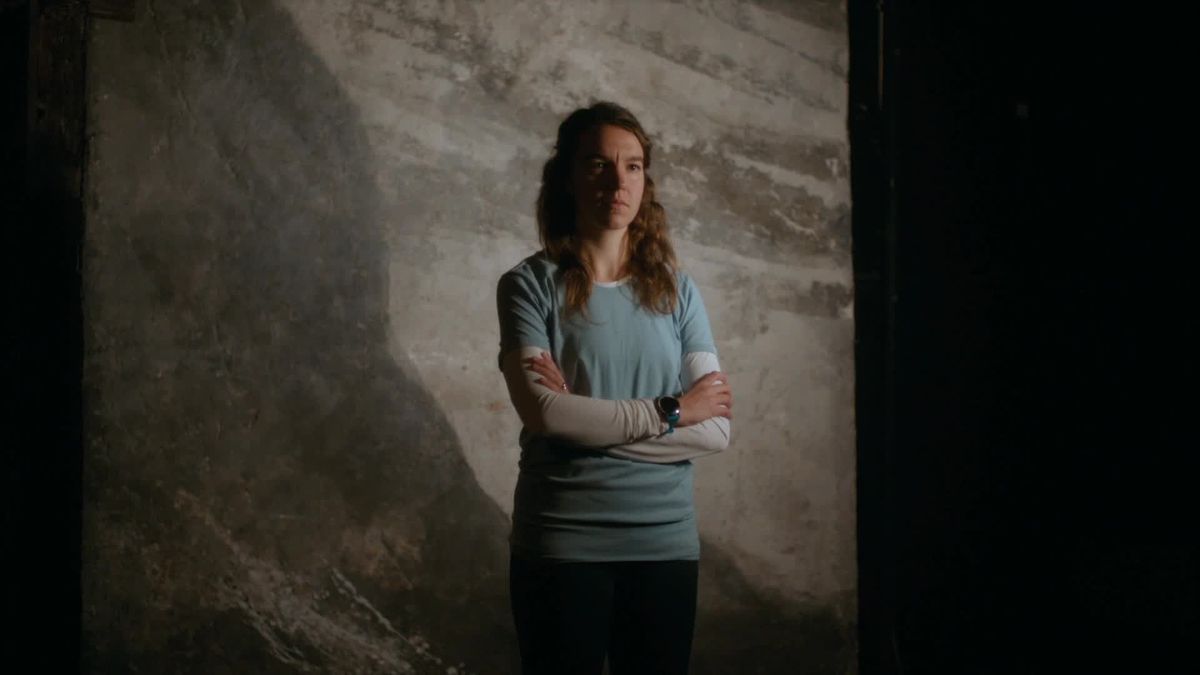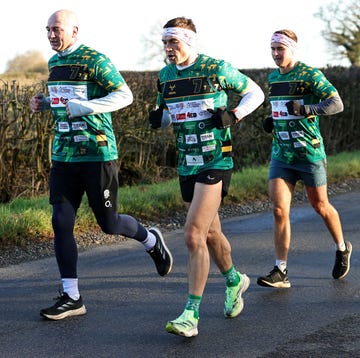- Not only does downhill running lead to soreness in your knee extensor muscles, but it can also do likewise in your elbow flexors—the muscles you use to bend your arm, a new study How a visually impaired runner and her guide found Journal of Strength & Conditioning Research.
- Make sure to take a day off in between hard leg workouts and cross-training workouts, even if they are working opposing body parts.
After Georgia State University researcher Kyle Brandenberger, Ph.D., had run around 100 races, he started to question the consistent muscle soreness that developed after race day—because it wasn’t just in his legs.
“We often assume that injury, such as delayed onset muscle soreness, to one body part does not impact strength in other limbs,” he told Runner’s World. When he was in the military, they would perform two extreme workouts on consecutive days, assuming the arms would be fresh after a hard leg workout.
Not exactly the case, which sparked his curiosity about whether leg injury may actually trigger upper-body injury, too.
That’s led to a new study focusing on downhill running, which found that the type of temporary knee extensor injury prompted by that kind of running may also impair activation and strength of the elbow flexors—the muscles responsible for bending the arm, like you do when you when you’re running.
Brandenberger and his fellow researchers tested six runners, with a control group of six sedentary participants. They found that after an hour of downhill running, the active group experienced a reduction in knee extensor strength. That was something to be expected, since previous research has linked the eccentric motion of downhill running—where the muscle lengthens under load—to more force on your quads.
What was surprising? The active group also experienced a reduced activation and strength of their elbow flexors. These effects were still noticeable 48 hours running.
And before you start blaming improper running form or the simple effects of the gravitational force, there’s actually another more likely culprit your central nervous system.
When muscles become injured—the tiny tears that occur when you exercise—it activates white blood cells called macrophages in the tissue. This kicks off an inflammatory response and cell signaling, which affects strength in those muscles.
But that process also affects strength of muscles other than the one being contracted, the study noted. It’s possible that since the immune cells do travel through the blood, they can trigger body-wide effects. But researchers aren’t sure yet whether the immune system is to blame for these results, or if the taxing of your nervous system—which occurs during strenuous exercise—is solely to blame.
As always, the challenge with a study like this is the small sample size. As a next step, researchers are looking to conduct further—possibly larger—studies to test the link further, especially in other muscles. They want to see whether the phenomenon is global throughout the body, or specific to the quads and elbow flexors.
What’s the takeaway for now? Brandenberger suggested that any extreme workouts—whether that means running, HIIT, cycling, or anything else that maxes out the legs—causing soreness should be followed by lighter workouts on the proceeding days. In other words, if it’s leg day on Monday, wait at least a couple days before an epic arm workout, he advised.













